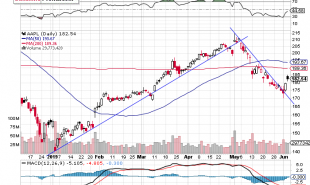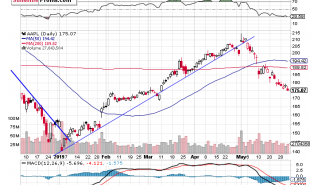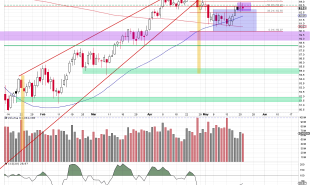
The “middle class” rhetoric is again one of the leading topics of this presidential cycle as it is considered the largest share of the population that can drive the economy.


However, according to Pew Research Center, the middle class may be dwindling in America.
“The middle class lost ground in nearly nine-in-ten U.S. metropolitan areas examined,” the Washington-based research firm said in a report released Wednesday.
The economic group is shrinking at the national level, the research also showed, to the point where it may no longer be the “economic majority in the U.S.”
Pew looked at data of 229 metropolitan areas between 2000 and 2014, which showed that the share of adults living in middle-income homes fell in 203 of those geographical areas.
“The decrease in the middle-class share was often substantial, measuring 6 percentage points or more in 53 metropolitan areas, compared with a 4-point drop nationally,” Pew said.
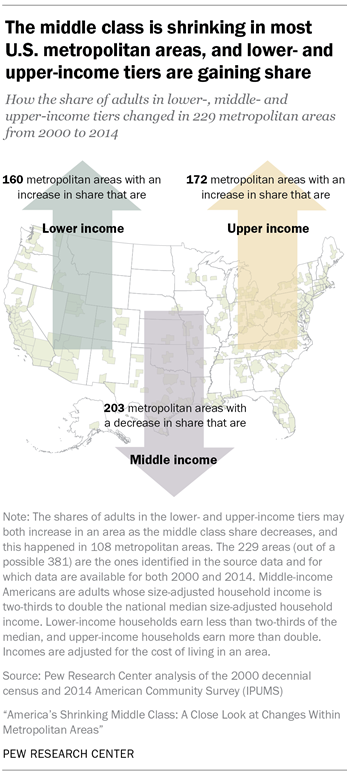
So where is the middle class going?
“With relatively fewer Americans in the middle-income tier, the economic tiers above and below have grown in significance over time,” Pew noted. “The share of adults in upper-income households increased in 172 of the 229 metropolitan areas, even as the share of adults in lower-income households rose in 160 metropolitan areas from 2000 to 2014.”
According to Pew, the reasons behind the erosion of the middle class include a decrease in household incomes as well as a growing inequality gap in the country.
“Generally speaking, middle-class households are more prevalent in metropolitan areas where there is less of a gap between the incomes of households near the top and the bottom ends of the income distribution,” Pew noted. “Moreover, from 2000 to 2014, the middle-class share decreased more in areas with a greater increase in income inequality.”
Meanwhile, the data showed that median U.S. incomes in 2014 were 8% less than in 1999.
“The decline was pervasive, with median incomes falling in 190 of 229 metropolitan areas examined,” Pew added.
The think tank also looked at the country as a whole in order to determine which metropolitan areas have the largest share of middle-, lower- and upper-income tiers in 2014.
“The 10 metropolitan areas with the greatest shares of middle-income adults are located mostly in the Midwest,” the data showed, with Wausau, WI taking the lead with 67%.
Meanwhile, the largest portion upper-income adults reside mostly in the Northeast or on the California coast. The lower-income tiers are mostly toward the Southwest and several on the southern border, Pew said.
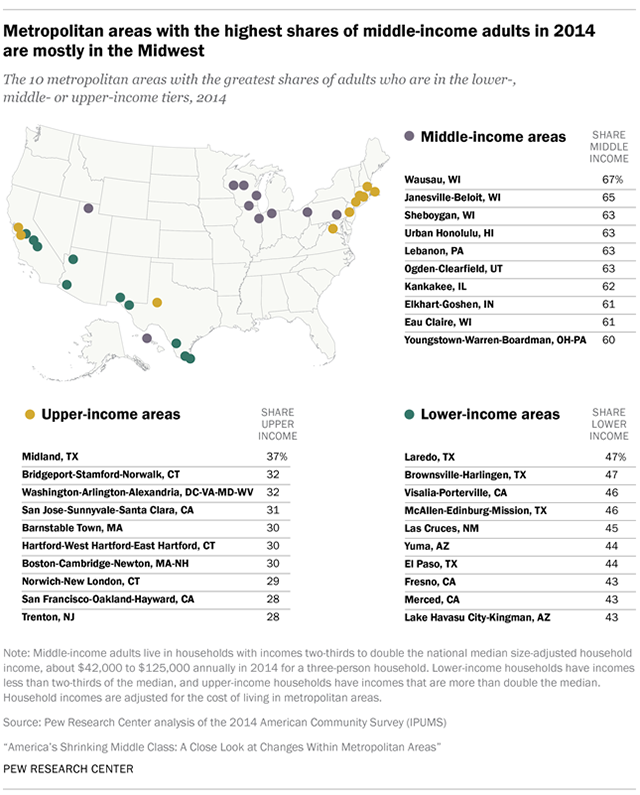
Read more by Wall St. Whisperer



